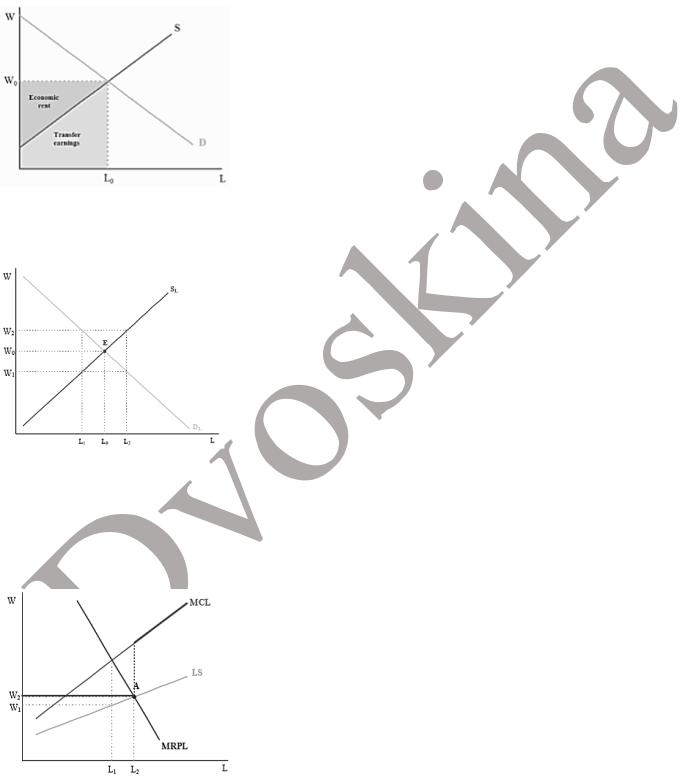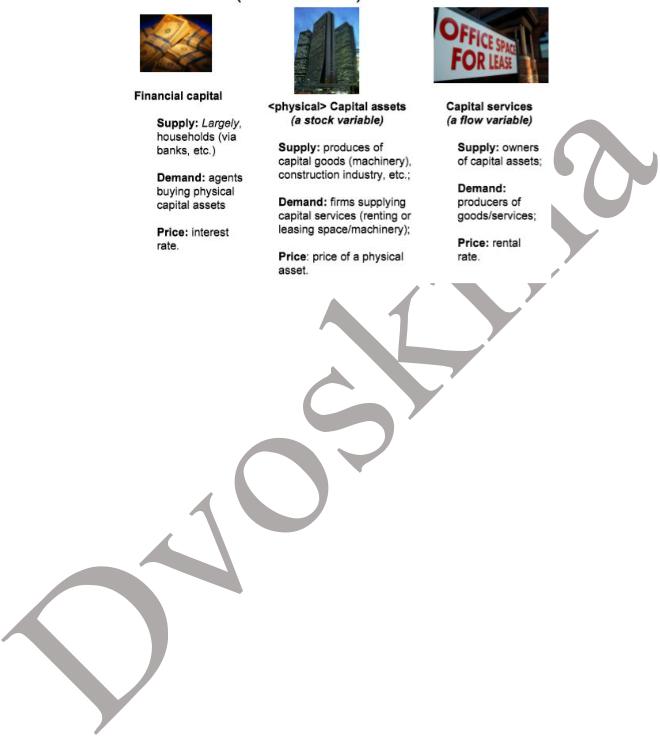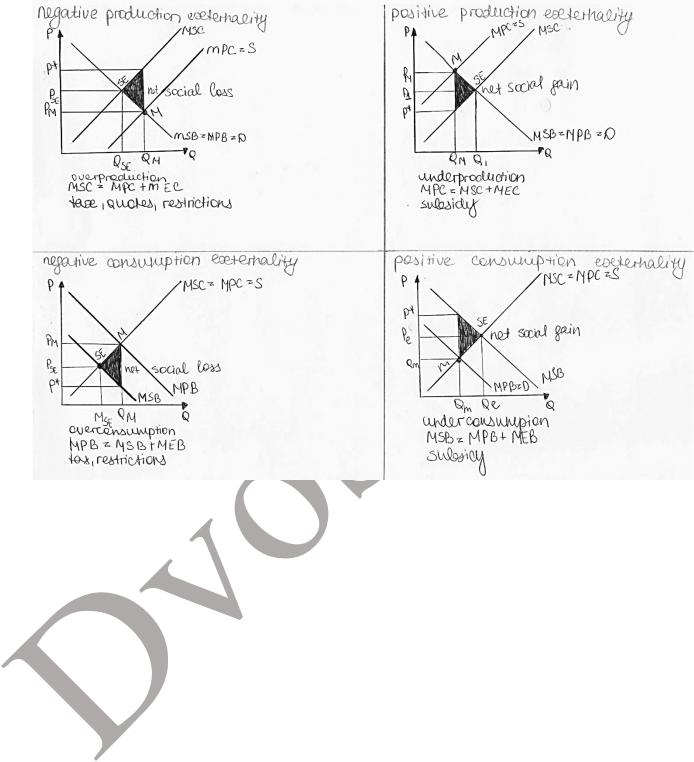
MICRO reference
.pdf
Industry Labor Supply
Small industry: has to offer wage on par with other industries to induce anyone to work for it. Horizontal labor supply curve.
Normally, labor supply is upward sloping – higher wages are needed to induce more workers to choose employment at given industry.
Industry’s labor supply curve is flatter in the long-run: training and re-training takes time
Demand shifts from changes in technology, prices of other inputs, demand shifts in the output market.
Supply shifts from wage changes in other industries, population shocks, government policies, etc.
Elasticity of supply depends on how easily workers can move from one industry to another

Transfer Earnings and Economic Rents
The transfer earnings of a factor of production in a particular use are the minimum payments required to induce that factor to work in that job.
Economic rent is the extra payment a factor receives over and above the transfer earnings.
Minimum Wage
“Effective” or “binding” minimum wage=one that actually affects employment. Involuntary unemployment exists if there are workers who would work at the going wage but cannot find jobs
Monopsony
Initial labor market equilibrium under monopsony: L1
W2 becomes the marginal cost of labor (MCL) till L2
The optimal point is A where W2=MRPL
The binding wage floor raises employment


Trade union
Trade union –worker organization set up with a goal of promoting workers’interests in key areas such as wages, hours of work, and working conditions.
Unions have greater bargaining power than individual workers, and use it to:
reduce labor supply (and get higher wages for members),
ensure workers are properly compensated for unpleasant (but productive) working conditions: compensating wage differentials.
Reductions in labor supply lead to higher wages for union members, and unemployment for others
Efficiency Wage Theories
efficiency wages are high wages which increase productivity through their incentive effect.
firms may find it profitable to pay their workers more than the market clearing wage.
if a worker is paid more than the market clearing wage, shirking on the job will become risky for him: if fired, he won’t find such a well-paid job easily!
Abilities
Human capital–the stock of expertise accumulated by a worker to enhance future productivity.
education (firm-specific skills, general skills, direct effect on MPL, less elastic labor supply, signaling, social networks and job search)
training and on-the-job training
experience

Capital and Land
Capital (physical)–stock of produced goods (plants, machinery, inventories) that are inputs to production of other goods and services.
choice between current and future consumption
Perpetuity
a “perpetuity” is a bond which guarantees a fixed payment m for an indefinitely prolonged period of time
in the UK, perpetuities are often called “consols” annual payment x, real interest rate r
PV = |
1 |
x + |
1 |
x + |
1 |
x + = |
1 |
|
[ |
1 |
|
] x = |
1 |
x |
|
(1 + r)2 |
(1 + r)3 |
|
|
1 − (1 |
|
|
|||||||
|
1 + r |
|
|
|
1 + r |
|
+ r) |
|
r |
|||||
|
|
|
|
|
|
|
|
|
|
1 |
|
|
|
|
r = i − π
Market for Capital Services
Demand works in the same way as demand for labor
In SR, the quantity of capital assets and capital services is usually assumed to be fixed In the LR
the slope of the supply curve depends on size of the industry in a small industry horizontal
in a large industry is upward-sloping
there is a positive relationship between the rental rate and the supply of capital services. a small industry can obtain as much capital goods as it wants, if it pays the going rental rate.
Market for Land
In SR, supply of land is more or less fixed for anyone (adjust P)
In LR, supply of land to individual agents can be varied (adjust P&Q)

Income Inequality
1)Income inequality among the poor is negatively correlated with economic growth, but inequality among the rich enhances it
2)Inequality aversion is DEEPLY rooted in human psychology…
Fighting Inequality
Government
Taxes and transfers (in kind or monetary)
Unemployment benefits
Minimum wage laws
Public employment
Private:
Charity
Volunteer work

Distortions
Externalities

Coase theorem
If at no cost people can negotiate the purchase and sale of the right to perform activities that cause externalities, they can always arrive at efficient solutions to the problems caused by externalities
Tragedy of the commons
the tendency for a resource that has no price to be used until its marginal benefit falls to zero
private ownership
charge for use
Public goods
Non-rival: When one person consumes the good, the amount available to someone else is not reduced.
Non-excludable: It is impossible to exclude anyone from consuming the good.
Free-rider problem-when too little of a good or service is produced because nonpayers cannot be excluded.
public provision
subsidized private provision
voluntary private provision of public goods by a privileged group
Non-homogenous good
Middleman, consultant can add value by providing information at lower cost than you would have to pay by collecting it on your own.
Middlemen, real or virtual (internet), provide value by helping sellers and buyers learn about each other: efficiency requires that the good ends up with the economic agent that values it most.
